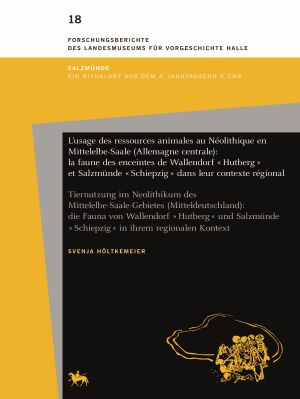Forschungsberichte des Landesmuseums für Vorgeschichte Halle
The newest edition project of the Saxony-Anhalt State Office for Heritage Management and Archaeology was founded in 2012. It serves as a forum for publishing the results of long-term research projects, such as those supported by the German Research Foundation, the Volkswagen Foundation or the »Luther Archaeology« cluster. The aim of this series is to present individual volumes dealing with a comprehensive complex of long term topics on a project-specific basis, usually published over several years.
The first volumes of this series each present initial results of the DFG research project on the Nebra sky disk. They are followed by volumes dealing with results of the multi-year project on “Luther Archaeology”. In addition to volumes on the German Research Foundation project "Cultural Change = Population Change?" and the Salzmünde research project "Catastrophe or Ritual?" supported by the Volkswagen Foundation, the results of further scientific projects will be published in this series in the near future.

Herausgeber
Prof. Dr. Harald Meller
Manuela Schwarz
Redaktion
Landesamt für Denkmalpflege und Archäologie Sachsen-Anhalt
– Landesmuseum für Vorgeschichte –
Richard-Wagner-Straße 9
06114 Halle (Saale)
Tel. 0345/5247-526
E-Mail: MSchwarz@lda.stk.sachsen-anhalt.de
Published so far
L’usage des ressources animales au Néolithique en Mittelelbe-Saale (Allemagne centrale): la faune des enceintes de Wallendorf « Hutberg » et Salzmünde « Schiepzig » dans leur contexte régional
Various early farming cultures populated the Middle Elbe-Saale region between 4200 and 2800 BC. Animal bones from two crucial sites, Wallendorf "Hutberg" and Salzmünde "Schiepzig", were analyzed and compared with faunal remains from 29 other pertinent published sites to demonstrate the cultural diversity involved in the development of animal use. In total, more than 33,000 animal remains were statistically evaluated using archaeozoological methods. The results show that food production was mainly based on cattle breeding and that certain sites showed evidence of specialization in the animal species and animal products used. Moreover, symbolic practices demonstrate that communities showed a particular appreciation of specific animals, who thus had a unique relationship with people.
Additional information you find here: https://doi.org/10.11588/data/QXMSS3







